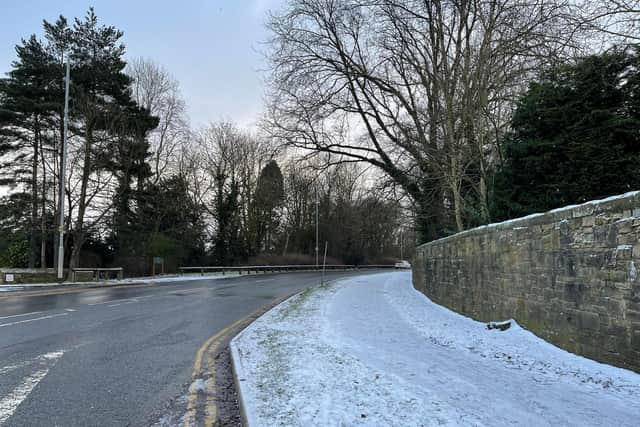Weather warnings in parts of Yorkshire as Met Office forecasts more snow for region
Temperatures across Yorkshire are set to plummet below freezing today as the region is hit with snow again.
The Met Office has said that frequent snow showers may lead to travel disruption in places, but that others are likely to miss the showers altogether.
Advertisement
Hide AdAdvertisement
Hide AdIt has also said that some roads and railways are likely to be affected with longer journey times if you are travelling by road, bus and train services.


There is a small chance of longer travel delays in places with some stranded vehicles and passengers.
There will probably be some icy patches on some untreated roads, pavements and cycle paths so some injuries might occur from slips and falls on icy surfaces.
There is a slight chance that some rural communities could become cut off and a small chance that power cuts will occur and other services, such as mobile phone coverage, may be affected by the weather.
Where are there weather warnings in place in Yorkshire?
Yellow warning for snow:
- Sheffield
- Doncaster
- Leeds
- Bradford
- York
- Grimsby
- Scunthorpe
- Scarborough
- Bridlington
- Northallerton
Advertisement
Hide AdAdvertisement
Hide AdWhat is the Met Office forecast for Yorkshire and the Humber?
Wednesday: Another very cold day with frequent snow showers leading to further accumulations in places. Remaining breezy at the coast although winds will become much lighter than recently. Ice and frost will be widespread with temperatures remaining below freezing for some. Maximum temperature 2 °C.
Wednesday night: Snow showers will steadily ease through the evening with most places becoming dry with clear skies after midnight. As winds fall light temperatures will plummet bringing a severe frost. Minimum temperature -7 °C.
Thursday: Remaining very cold with plenty of crisp winter sunshine and residual lying snow on the ground. The odd snow shower may affect coastal areas during the afternoon. Maximum temperature 3 °C.
Advertisement
Hide AdAdvertisement
Hide AdOutlook for Friday to Sunday: Likely remaining cold throughout with strengthening southerly winds. Mainly dry and sunny on Friday and Saturday. Possibly turning cloudier on Sunday with a risk of snow.
How to drive safely in snow
- Slow down
Snow, ice and water on the road reduce grip and, coupled with poor visibility in bad weather, they mean it’s essential that you cut your speed.
Stopping distances can be 10 times greater in snow and ice so slowing down gives you more time to react to other traffic or hazards on the road ahead.
However, be careful that you don’t drive so slowly that you risk losing momentum. On snow-covered roads and especially on hills this could see you stuck and struggling to get moving again.
- Keep it smooth
Advertisement
Hide AdAdvertisement
Hide AdAs well as keeping your speed down you need to keep your inputs smooth. Sharp acceleration, braking or steering are more likely to cause your car to lose grip, leaving you with no control.
Where you can, try to use engine braking to slow down, that way you’re less likely to skid.
- Leave more space
With stopping distances seriously increased by slippy conditions it’s vital you leave more space between your car and the vehicle in front.
It’s also important to try and anticipate what other drivers are doing - being properly aware could save you from a crash or being stranded as others grind to a halt. It also means you're less likely to have to brake or steer suddenly.
- Use a high gear
Advertisement
Hide AdAdvertisement
Hide AdIf your car is struggling to find grip, especially when pulling away, try selecting a higher gear. This should reduce the amount of wheelspin and help you get moving.
- Stay seen
With shorter days and the prospect of rain, fog or snow making visibility worse, it's important to make sure you can see and be seen. Check all your lights work and are clear of snow or ice before setting off.
Don't wait until it's pitch black to use your headlights and don't just rely on running lights when conditions deteriorate. If it's snowing heavily, dipped beams may actually work better than full beams.